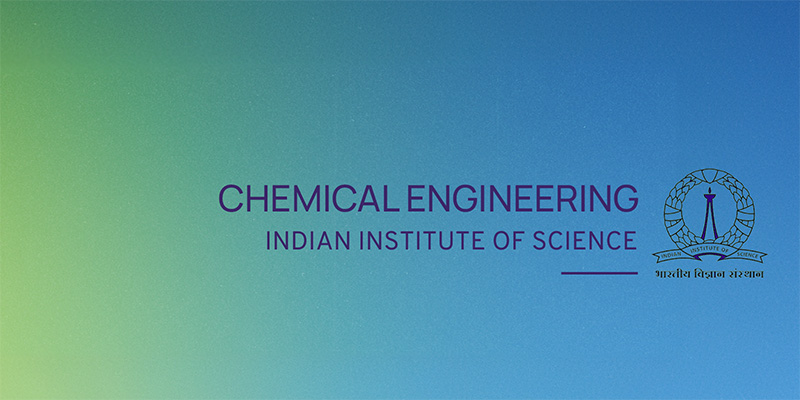July 3, 2025 -- July 3, 2025

Student : Abhishek Ranade, Dept. of Chemical Engg, IISc, Bengaluru.
Date & Time: 03rd July. (Thursday) 2024 at 4:00 pm
Venue: Seminar Hall, Chemical Engg.
Flexible, nanostructured hydrogen sensors.
The use of hydrogen in industries has been increasing over the past few years in addition to its emergence as a clean energy carrier. Owing to the high diffusivity, colourlessness, odour lessness, and a wide flammability range (4–75 vol % in air), hydrogen can leak easily and mix with the ambient air to form a potentially explosive mixture. Therefore, a reliable sensor that sniffs out such leaks as quickly as possible becomes imperative as a safety barrier to protect life and infrastructure centred around hydrogen. There are different types of sensors classified based on the mechanism they use to detect hydrogen, and each type has its pros and cons with regard to their overall performance. Chemi resistive sensors are those that work by undergoing a change in their electrical resistance upon interaction with hydrogen and have a relatively straightforward setup. They often use palladium (Pd), which can quite selectively sniff out hydrogen at ambient conditions and can do so very quickly if used in its nanostructured form that offers a high surface area for adsorption. Moreover, mechanically flexible Chemi resistive sensors provide an added advantage in that they are lightweight and can be easily wrapped around flanges of hydrogen carrying pipes, which can be vulnerable to leakage owing to malfunctioning gaskets, for instance.
Some notable works in the field of developing flexible Chemi resistive sensors include [1], [2] and [3]. A comprehensive review of such flexible hydrogen sensors further contextualizes these developments [4]. However, these methods still rely on vacuum deposition, high-temperature processing, and multi-step surfactant removal, which are time-consuming, thereby limiting scalable manufacturing and consistent performance. The objective of this work was developing novel, energy-efficient fabrication techniques that can quickly yield reproducible nanostructured hydrogen sensors on flexible substrates.
This method, which is centred around using a reaction between aluminium and a PdCl2 solution, can yield electrically conductive Pd nanoparticle networks formed in-situ on flexible substrates such as polyimide. Aluminium forms a stable oxide layer that impedes direct galvanic exchange with Pd2+. However, the acidic PdCl2 solution (which contains HCl) promotes pitting corrosion, allowing protons to penetrate the oxide and reach the underlying aluminium. Here, hydrogen atoms are generate d and act as reducing agents for Pd2+ ions at the aluminium-liquid interface, leading to the formation of Pd nanoparticles. This reaction is accompanied by the generation of hydrogen gas bubbles, which rupture the oxide layer intermittently and eject the Pd nuclei into the surrounding solution [5].
This talk will address how these nuclei, now mobile, deposit onto nearby surfaces such as the polyimide substrate. Such nuclei of Pd (and other noble metals like Pt) can adsorb hydrogen from these bubbles, facilitating further reduction of Pd2+ in solution. This autocatalytic process leads to dense, electrically conductive Pd nanoparticle films formed at ambient conditions within a few minutes. By strategically positioning the polyimide above the aluminium foil (termed the “inverted assembly” approach), deposition efficiency was maximized, as hydrogen bubbles carrying Pd nuclei rise upwards due to buoyancy. This orientation resulted in more consistent deposition with a higher yield. Further improvements were made by tuning the precursor solution. Increasing the HCl content and using thicker aluminium tape led to more vigorous hydrogen evolution, improving deposition density. However, the increased reaction extent meant that essential precursors like potassium bromide (KBr) – added for oxidation resistance – were hypothesized to be consumed entirely during deposition. To counteract this, a post-treatment step was introduced where fresh precursor solution containing KBr was dropped onto the deposited film for a brief period. This step significantly improved oxidation resistance by passivating the surface and removing residual oxides, enabling better sensor performance in ambient air.
To enhance selectivity, a ZIF-8 (Zeolitic Imidazolate Framework-8) coating was put on some sensors. ZIF-8 possesses six-membered rings just large enough to allow hydrogen molecules to pass through, while filtering out larger interferents like CO and CH4. Sensors with ZIF-8 exhibited faster response times and better reproducibility across repeated tests, although their sensitivity was slightly reduced compared to uncoated samples. Nevertheless, the sensors developed herein, when tested at room temperature, exhibited fast response times (t90 ~ 8 s @ 1% H2), a low detection limit (0.1% H2), resilient performance under compressive and tensile strains, and stable responses over a span of several months.
By eliminating vacuum chambers, high-temperature steps, and surfactants, this work introduces a low-cost, scalable paradigm for flexible hydrogen Chemi resistive sensors [6]. The in-situ aluminium-aided deposition strategy and ZIF-8 filtration concepts promise broader application in roll-to-roll nanoparticle deposition, wearable leak-detection patches, and other flexible-electronics platforms. Further details about this work will be discussed in the colloquium.